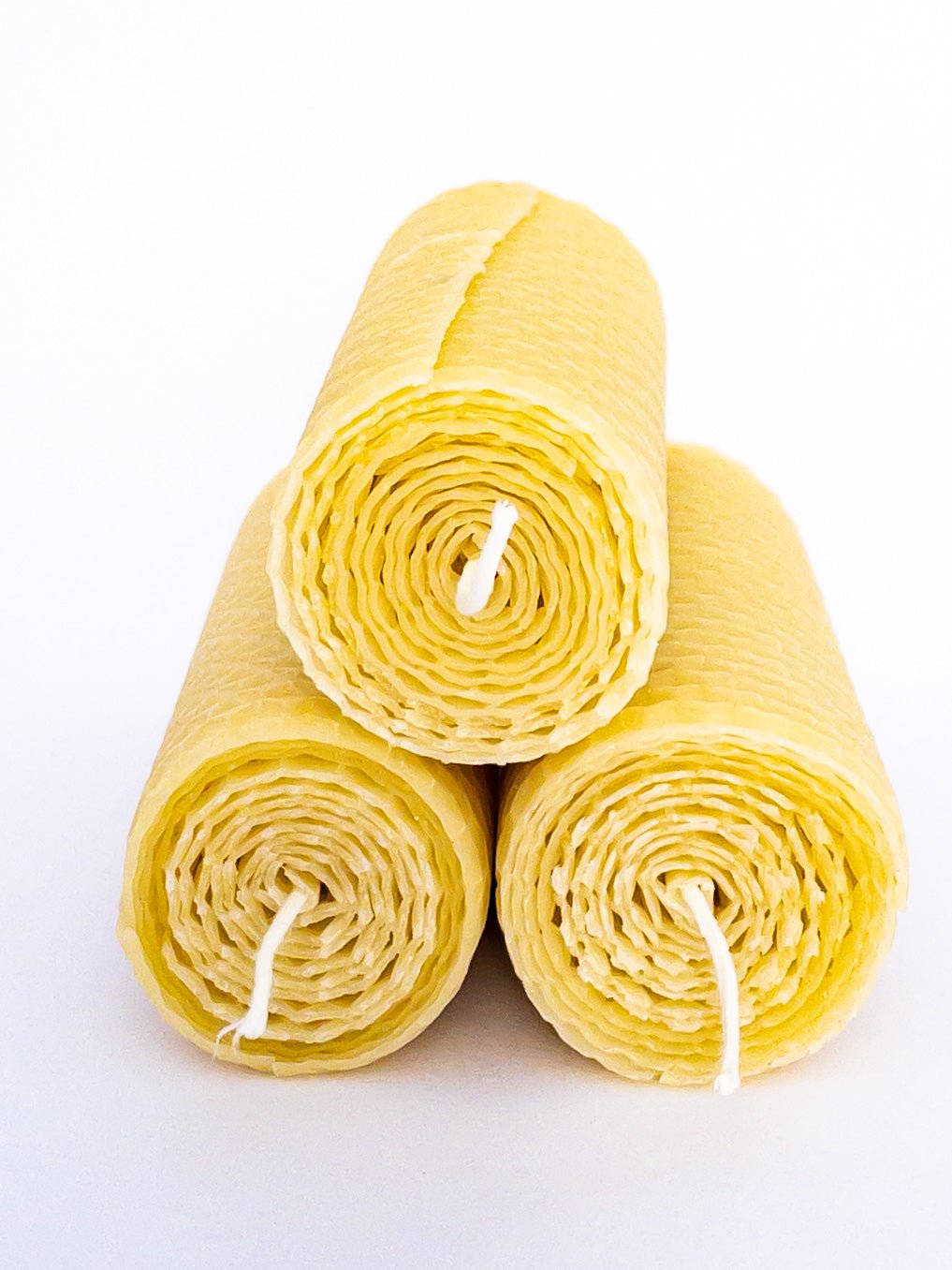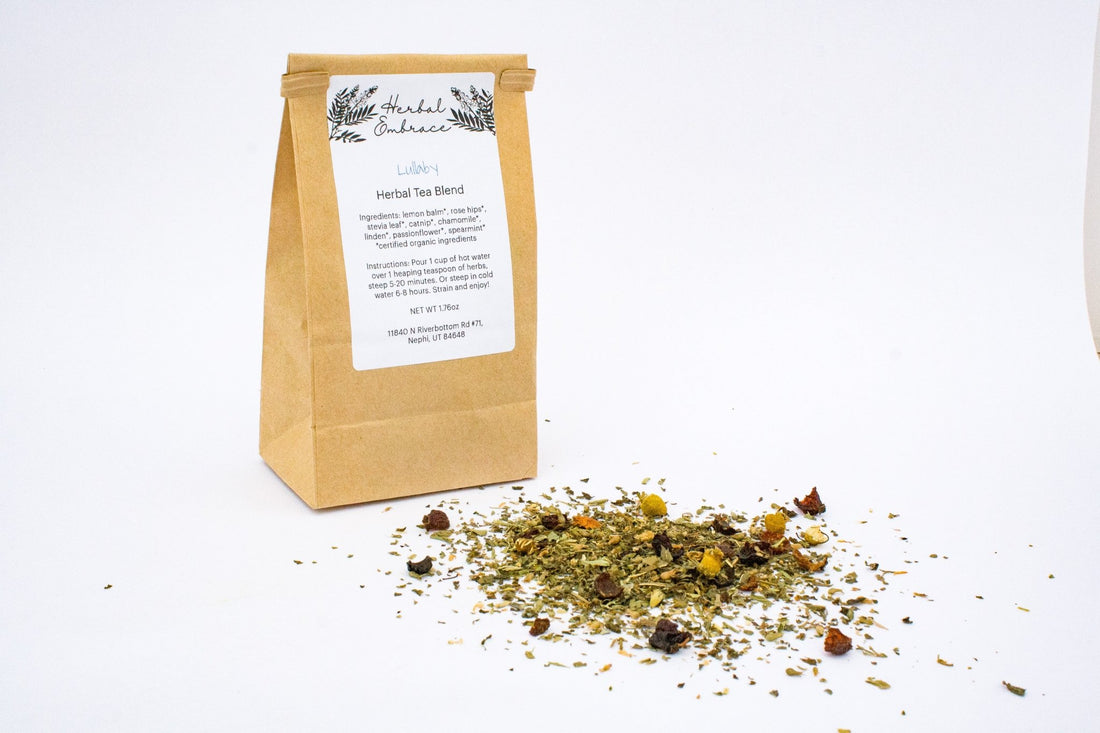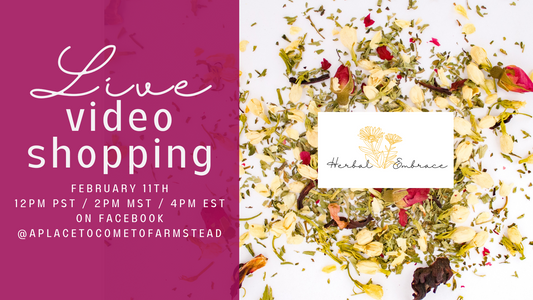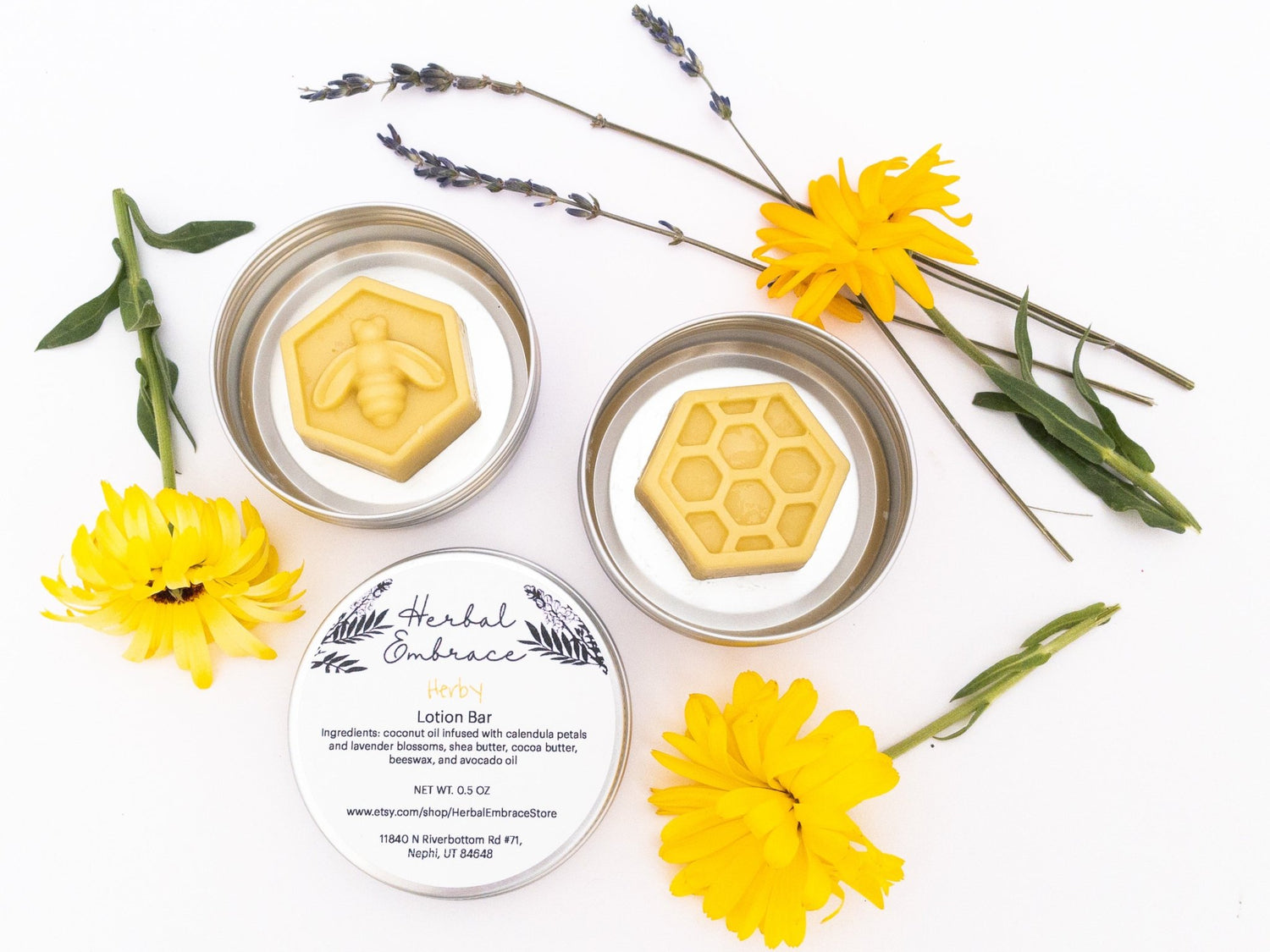I formulated this tea blend as part of an assignment towards my Master Herbalist certificate! If you would like to deep dive with me on why each ingredient is included here, and the potential power of this formula, keep reading!
The purpose of this formula is to aid the body in correcting a situation of chronic or acute insomnia, falling asleep, or anxiety around going to bed. The herbs used in the formulation were selected to create a blend safe and enjoyable for all ages - especially children, pregnant women, and those new to herbs or sensitive to Valerian. Sometimes drama around bedtime, inability to fall asleep, or resistance to going to sleep, is related to one of 3 issues:
- Lack of minerals leading to an activated nervous system,
- Indigestion after dinner,
- Anxiety or stress or fear (related to upcoming events, lack of a feeling of accomplishment, or anxiety about sleeping alone or in the dark or from trauma being separated from Mom, etc.).
Creating a routine around accepting the end of the day, calming down the nervous system, sneaking in some extra minerals, enjoying something sweet with your loved ones, and calming down any indigestion or nervous tension or nervous tummy troubles, easing into sleep, can use this herbal formula as a central aspect.
The ingredients in this formula, in order of largest amount by weight, are: Lemon balm, rose hips, catnip, stevia, chamomile, linden, passionflower, spearmint.
Lemon Balm (Melissa officinalis)
Lemon Balm acts on the nervous system to calm it down, as well as tone up the immune system and provide a delicious lemon-y flavor. Part used: Leaf. Therapeutic Actions: Anti-catarrhal, moderate stimulant, diaphoretic, anti-spasmodic, carminative, febrifuge
Rose hips (Rosa species)
This is included per my daughter’s request - they are her favorite herb because they are high in vitamin C and make any tea taste amazing - warm, pinky, slightly sweet and full-bodied. Rose hips have a quality around them that just seem nurturing and motherly, especially to children. Part used: Hips (fruit). Therapeutic Actions: Vitamin “C”/ hypotensive
Catnip (Nepeta cataria)
Catnip is included to benefit the nervous system by nourishing it and calming it down, as well as to act as a mild pain reliever for tummy aches or headaches associated with the end of the day. Also gives a gentle immune system boost. Part used: Leaf. Therapeutic Action: Calmative.
Stevia (Stevia rebaudiana)
Stevia helps make the formula more palatable for children or those who do not enjoy bitter teas. May also help prevent cavities, which makes it a great before-bed substance. Helps skip the step of melting solidified honey into tea! Part used: Leaf. Therapeutic Actions: antibacterial, anti-inflammatory, hypotensive, antiseptic, diuretic, anti-fertility and cardiotonic.
Chamomile (Matricaria chamomilla syn. Matricaria recutita)
Chamomile is included for a calcium, magnesium, potassium, and vitamin B boost, as well as soothing aroma. These contribute to a calming of the central nervous system as well as muscles tight from nervous tension. It is a bitter herb, which helps the digestive system. Well tolerated by babies and children — who also enjoy seeing the flowers floating in the water as it steeps — this is a gentle herb well loved by all ages. Part used: flower. Therapeutic Actions: Anti-inflammatory, vulnerary, antiseptic, antispasmodic.
Linden (Tilia spp.)
Linden is known to help prepare the body for sleep, as they are a nervine. Calming and uplifting and also relaxes muscle spasms by acting on the circulatory system. In this sense it is also known to help with heart palpitations, grief, and other physical and emotional troubles of the heart. Part used: flowers & leaves. Therapeutic Actions: nervine, anxiolytic, antispasmodic, hypotensive, vasodilator, demulcent, diaphoretic, anti-inflammatory.
Passionflower (Passiflora incarnata)
Research has shown that passionflower improves sleep quality - helping the person to sleep without waking and to feel well rested upon waking. Part used: flower. Therapeutic Actions: nervine, anxiolytic, anti-spasmodic.
Spearmint (Mentha spicata)
Spearmint is included for flavor, to soothe indigestion. Better tolerated than peppermint for pregnant women. Part used: Leaf. Therapeutic Action: diaphoretic
Altogether these herbs should work synergistically to promote a desire for sleep, enable a calming of the entire system to fall asleep, and help the body sleep soundly through the night.
My experience with this formula
I have had chronic sleep issues for as long as I can remember. I have trouble wanting to go to sleep, and I have trouble falling asleep once I get in bed. I frequently stay up very late studying or working and have very inconsistent sleep schedules. I do not like waking up in the morning. I don't typically have trouble with waking up in the middle of the night or waking up too early and not being able to get back to sleep, but I have spent many hours staring at the ceiling frustrated that I am still awake.
I made a syrup from the loose leaf tea blend and added honey to make it a nice easy bedtime routine for myself. I took about 1-2 swallows of this concentrate for 14 days, always taking off on Sundays since that is how I keep track of taking my various herbal protocols that I take 6 days on, 1 day off. Around Day 6 I finally started falling asleep quickly. That has stayed consistent through the rest of my 14 day experiment.
SO, I'm going to keep doing it!
How about you? What has been YOUR experience with Lullaby tea? Would you like to know how I made the concentrate syrup for easy daily dosing?
How to make a Sleep Syrup
First we make a decoction using 1 ounce dried herbs for 1.5 pints water. If we start with 1/2 gallon of distilled water, then that would be (1 oz herbs / 24 oz water) X 64 oz water = 2 and 2/3oz dried herb.
Materials:
- 2.6667 oz dried herb blend
- 64 oz distilled water
- 1/4 cup honey
- Pot
- 1 glass bowl
- Cheesecloth
Process:
- First we make a decoction: Put the herbs into the distilled water, bring water to boil, then turn down to a simmer. Simmer for 10 minutes, turn off the heat, let sit for 5 more minutes, strain.
- Return to pot and simmer for another hour or so until the liquid has reduced by half.
- You should have a quart of liquid now. Add 1/4-1 cup of honey and enjoy as syrup.
- Label and refrigerate
I hope this helps you and yours create a more peaceful transition into sleep, and to sleep well all night long! I would love to hear your stories and testimonials.
For fun & practical video classes on making & using Herbal Remedies, check out this sweet deal: Online Classes — Every Day An Experiment








